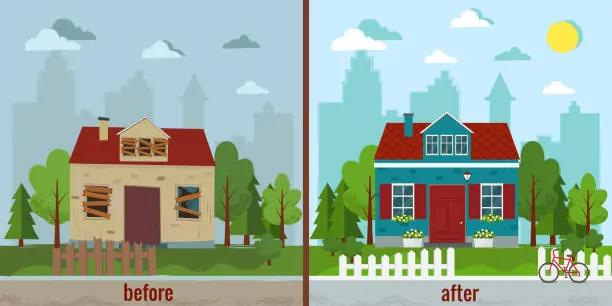House flipping can be a lucrative venture, turning a run-down property into a desirable home for a significant profit. However, the process is filled with potential pitfalls that can quickly erode your earnings. Success in this field requires more than just a good eye for design; it demands careful planning, financial discipline, and market knowledge.
Unlocking the potential of a fixer-upper involves a strategic approach from purchase to sale. The most successful flippers operate with a clear set of principles that guide their decisions and protect their investments. Below are ten essential secrets that can help you navigate the complexities of house flipping and maximize your returns.
1. Master the Market
Before you even consider a property, you need to become an expert in your target market. Understand local real estate trends, average property values, and the features that buyers in the area prioritize. Knowing what sells, and for how much, allows you to make informed decisions and avoid overpaying for a property or over-investing in renovations.
2. Follow the 70% Rule
A key principle for profitable flipping is the 70% rule. This guideline suggests that you should pay no more than 70% of the After Repair Value (ARV) of a property, minus the estimated cost of repairs. For example, if a home’s ARV is $300,000 and it needs $40,000 in renovations, the 70% rule would calculate your maximum offer as ($300,000 x 0.70) – $40,000 = $170,000. This formula helps build a financial cushion for unexpected costs.
3. Secure Financing First
Having your financing in order before you start looking for properties gives you a significant advantage. Whether you are using cash, a conventional loan, or a hard money lender, being pre-approved shows sellers you are a serious buyer. This allows you to act quickly when a great deal comes along, which is crucial in a competitive market.
4. Accurate Budgeting is Crucial
One of the biggest mistakes new flippers make is underestimating renovation costs. Create a detailed, line-item budget for every aspect of the project, from demolition to finishing touches. Always include a contingency fund of 15-20% of the total renovation budget to cover unforeseen issues that will inevitably arise, such as hidden plumbing problems or structural damage.
5. Focus on High-Impact Renovations
Not all renovations deliver the same return on investment. Focus your budget on upgrades that add the most value and appeal to the widest range of buyers. Kitchens and bathrooms are consistently at the top of the list. A modern, functional kitchen and updated bathrooms can be major selling points that justify a higher asking price.
6. Build a Reliable Team
You cannot flip a house alone. Assembling a trustworthy team of professionals is essential. This includes a real estate agent who understands investment properties, a reliable contractor, and skilled tradespeople like plumbers and electricians. A good team works efficiently, delivers quality results, and helps you stay on schedule and within budget.
7. Know When to DIY and When to Hire
While doing some of the work yourself can save money, it is important to be realistic about your skills and timeline. Tasks like painting or minor landscaping may be good DIY projects. However, for specialized work like electrical, plumbing, or major construction, hiring a licensed professional is non-negotiable. Poorly executed work can lead to costly repairs and failed inspections.
8. Prioritize Curb Appeal
The first impression of a property is formed from the street. Neglecting the exterior is a common error. Simple, cost-effective updates can dramatically enhance curb appeal. This includes fresh exterior paint, a tidy lawn, new house numbers, and an inviting front door. A touch of a material like a cultured stone promontory around the base can also add texture and an upscale feel.
9. Stage the Property to Sell
An empty house can feel cold and uninviting. Staging helps potential buyers visualize themselves living in the space. Professional staging can highlight the home’s best features and create an emotional connection. If a professional stager is not in the budget, focus on furnishing key areas like the living room, primary bedroom, and dining area to show the home’s potential.
10. Price It Right from the Start
After all your hard work, the final step is selling. Overpricing a home can cause it to sit on the market for too long, leading to increased holding costs. Work with your real estate agent to analyze comparable sales and set a competitive price right from the beginning. A well-priced, beautifully renovated home is more likely to attract multiple offers and sell quickly.
Read more: 10 Must-Have Amenities That Will Make Your Airbnb Guests Love Staying – Celebre Buzz
Bedroom Bliss: Tips for a Warm and Inviting Space – Celebre Buzz
Top Home Safety Gadgets to Protect Your Family in 2025 – Celebre Buzz
